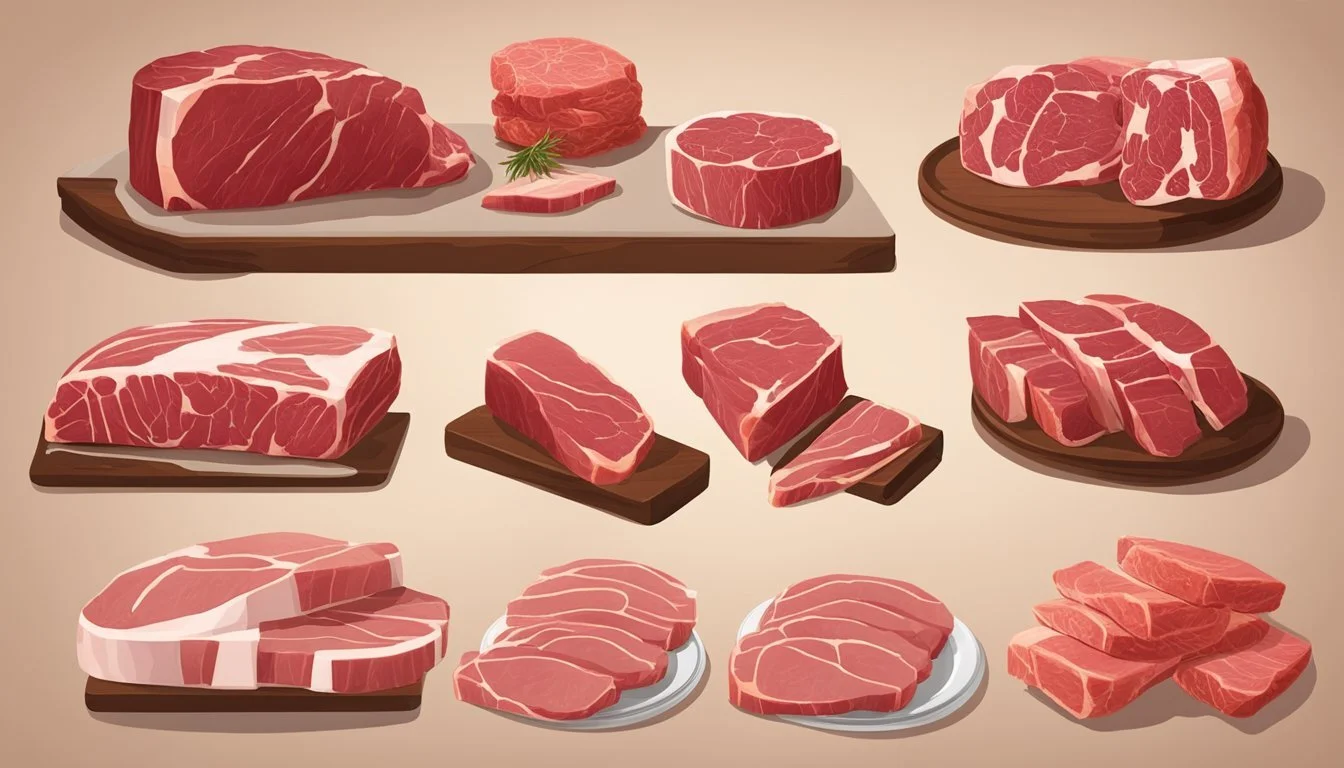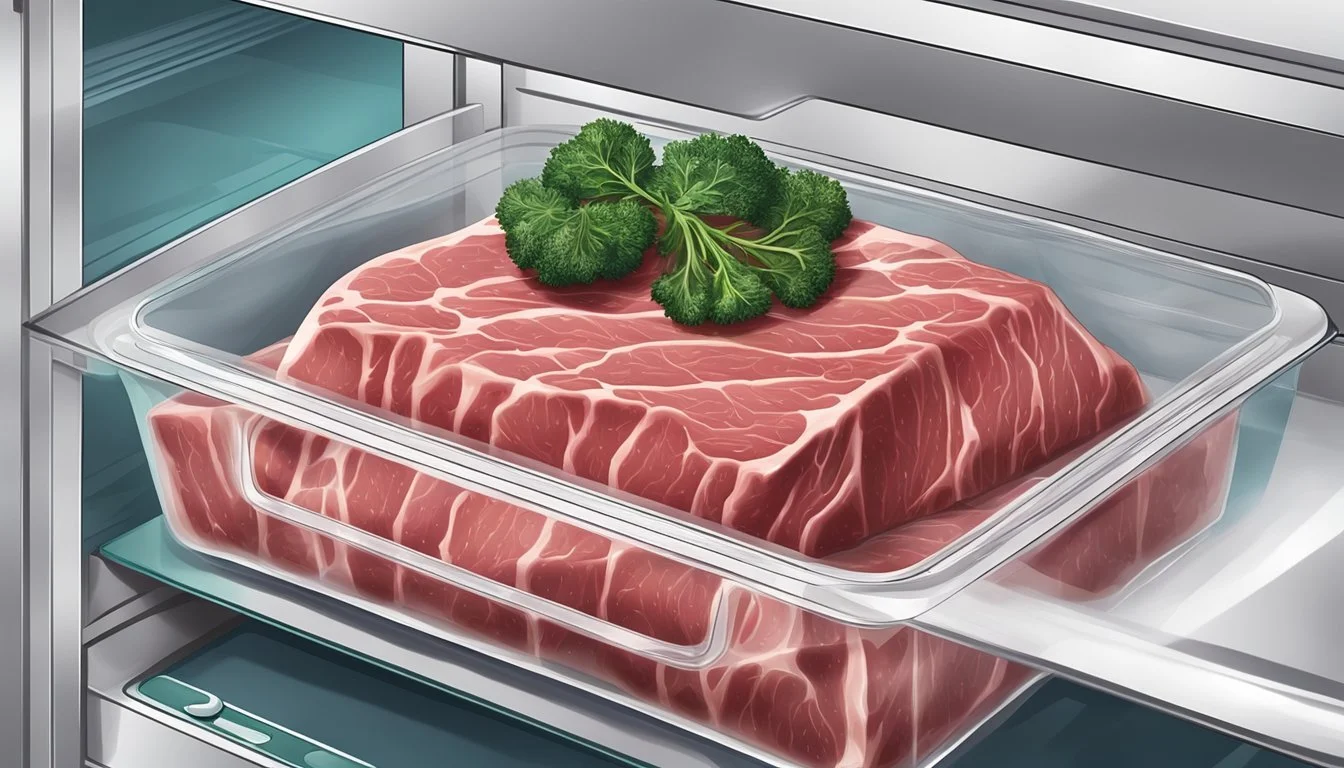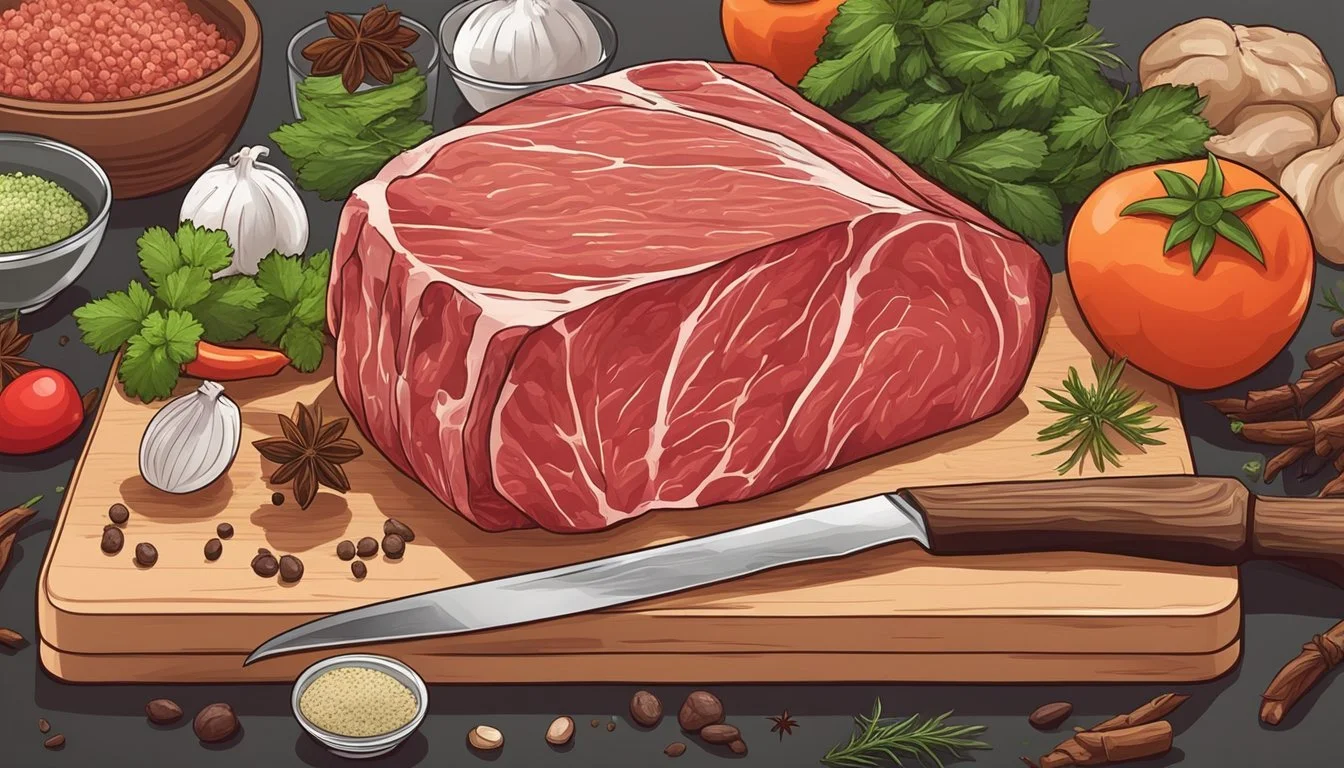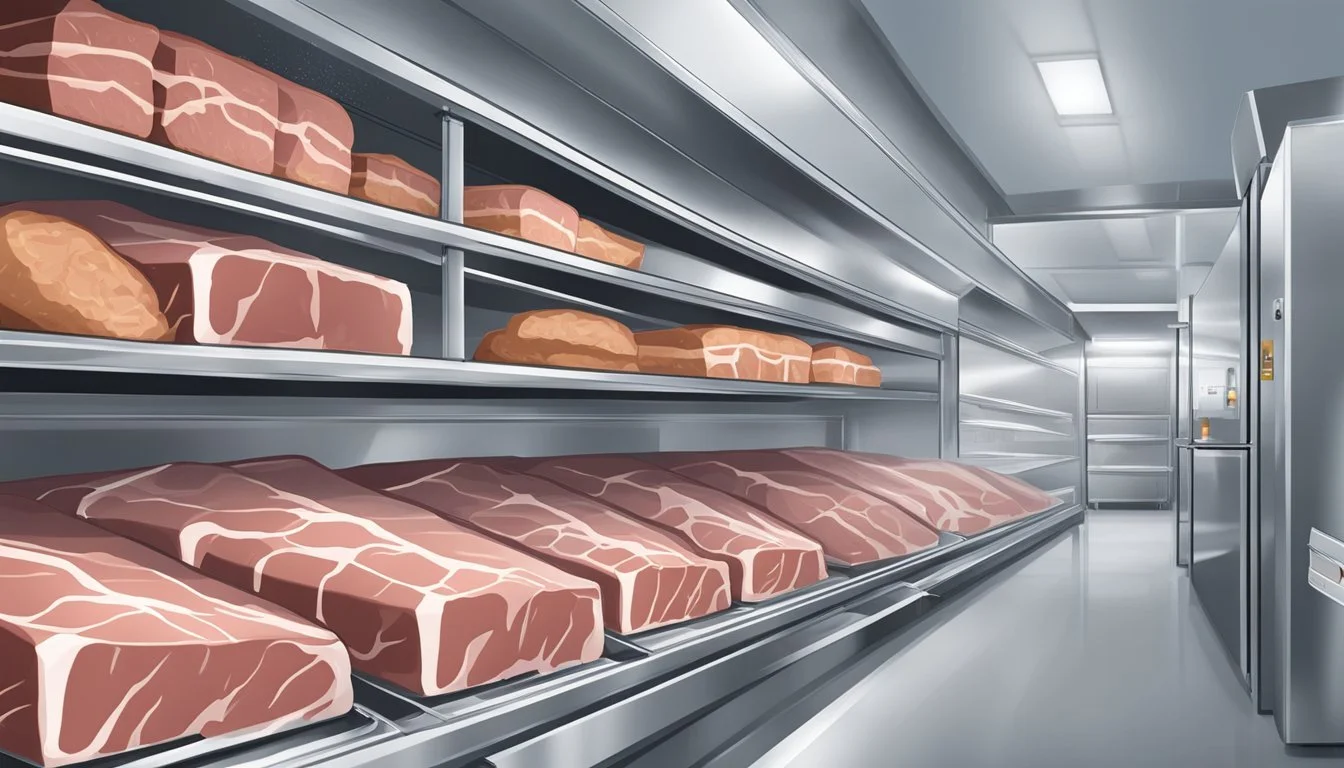How Long Does Beef Last?
Shelf Life and Storage Tips
The shelf life of beef varies significantly based on its state—whether it's raw or cooked—and the storage method. Raw beef cuts such as steaks, roasts, and chops may be refrigerated for 3 to 5 days, with ground beef advised to be used within 1 to 2 days. To extend the longevity, beef can be frozen, with cuts like roasts maintaining quality for 4 to 12 months and ground beef for 3 to 4 months.
Once cooked, beef should ideally be consumed within 3 to 4 days when stored in a refrigerator at or below 40°F to ensure safety and quality. Opened canned beef is an exception, offering a shorter refrigerator shelf life of 7 to 10 days. The precise time frame may vary based on storage conditions; consistent refrigeration is critical in slowing bacterial growth without halting it entirely.
Understanding the recommended storage times and proper handling is key to preventing foodborne illness and spoilage. It's important to note that while a sell-by date on beef can offer guidance, it's not a definitive indicator of safety; careful attention to storage times and temperatures remains paramount.
Understanding Beef and Its Varieties
Beef is a versatile protein that comes in various cuts, each with its unique properties and shelf life. The longevity and quality of beef play crucial roles in both food safety and culinary quality.
Types of Beef
Different types of beef are suited for different preparations due to their varied fat content, tenderness, and flavor. Here are key beef types to understand:
Fresh Beef: This category includes cuts that have not been frozen or processed. Fresh beef cuts can range from roasts and steaks to ground beef.
Beef Roast: Generally a larger cut that's cooked by roasting, it is a popular choice for its rich flavors and can include rump, sirloin, and rib roast.
Steak: Cut from the muscles across the grain, steaks such as ribeye, sirloin, and filet mignon are favored for grilling and pan-frying.
These beef cuts come in various types, including but not limited to:
Choice: High-quality beef with less marbling than Prime, but still tender and flavorful.
Select: Leaner cuts of beef that may sacrifice some juiciness for fewer calories.
Quality Assessment
The quality of beef is assessed based on several factors including marbling, age, and appearance:
Marbling: The amount of intramuscular fat enhances both the flavor and the tenderness of the beef.
Color: High-quality beef typically has a bright cherry-red hue when oxygenated and exposed to air; darker purples for vacuum-packed beef is normal until exposed to air.
Texture: Firmness and grain texture can indicate the beef's tenderness and quality.
These indicators help consumers and culinary professionals identify the type of beef that best suits their needs and ensures optimal flavor and safety upon consumption.
Proper Beef Storage Techniques
Effective beef storage is essential for maintaining freshness and safety. The methods below cover both short-term and long-term preservation, ensuring that the beef retains its quality and is safe for consumption.
Refrigerator Storage
In the fridge, beef should be kept at a temperature range between 32°F (0°C) and 40°F (4°C). This slow bacteria growth. Beef should be stored in its original packaging or wrapped in plastic wrap to prevent cross-contamination with other foods. Raw steaks and roasts can stay fresh in the fridge for 3 to 5 days, while ground beef should be used within 1 to 2 days.
Steaks/Roasts: 3-5 days in fridge
Ground Beef: 1-2 days in fridge
Remember to place beef in the coldest part of the refrigerator to ensure consistent temperature exposure.
Freezer Storage
For long-term storage, freezing beef is effective. Use freezer temperatures set at 0°F (-17.8 °C) or lower. When freezing beef, opt for vacuum-sealed bags or airtight containers to minimize freezer burn and extend storage life. Mark the freeze date on the package for later reference.
Beef Type Freezer Life Steaks/Roasts Use within 9-12 months for best quality Ground Beef Use within 3-4 months for best quality
Thaw frozen beef in the refrigerator prior to cooking to maintain safety and quality.
Alternative Storage Methods
Alternative storage methods include using vacuum-sealed bags, which remove air and can prolong the shelf life of beef. When using vacuum-sealed bags, ensure they are of a quality suitable for long-term storage and that they are properly sealed. Airtight containers also serve as a good alternative to maintain the quality of beef, especially for cooked leftovers or pre-cooked meals (how long do cooked meals last?).Keeping beef dry before storage is critical, as moisture encourages bacterial growth and spoilage. Always store beef in a cool, dry place if refrigeration or freezing is not immediately possible.
Maximizing Beef Shelf Life
Maximizing the shelf life of beef involves understanding storage guidelines, proper freezing techniques, and safe defrosting methods to preserve its quality and safety.
Fresh Beef Guidelines
Storing beef correctly can significantly extend its shelf life. For optimal freshness, beef should be stored in the refrigerator at 40°F (4.4°C) and used within 3 to 5 days; ground beef and variety meats have a shorter window of 1 to 2 days. Packaging beef in air-tight containers or vacuum-sealed bags helps prevent spoiling and bacterial growth. A stable, cool temperature is crucial for preservation.
Freezing Beef
To extend beef's shelf life up to 12 months, freezing is a reliable method. Frozen steaks and roasts can be kept for 9 to 12 months, while ground beef is best used within 3 to 4 months to maintain quality. It is essential to prevent freezer burn, which dries out the surface and affects the taste and texture, by using heavy-duty plastic or vacuum-sealed bags. The freezer should be set at 0°F (-17.8°C).
Freezing Tips:
Use heavy-duty plastic bags or vacuum-sealed bags.
Label with the date of freezing.
Ensure a tight seal to prevent air exposure.
Defrosting and Refreezing
Thawing frozen meat should be done in the refrigerator, under cold water, or in the microwave - not at room temperature. Refreezing previously thawed meat is possible if it was thawed in the refrigerator and hasn't been left at room temperature for more than 2 hours. However, refreezing can compromise quality due to moisture loss, so it's best to avoid multiple cycles.
Thawing and Refreezing Tips:
Thaw in the refrigerator for slow, safe defrosting.
Never thaw on the counter to minimize bacterial growth.
Refreeze within the same day of thawing to maintain quality.
Minimize freezer burn by reducing the meat's exposure to air during thawing.
Food Safety Considerations
When storing and preparing beef, it is crucial to manage temperature and handling practices to inhibit bacterial growth and prevent foodborne illness.
Avoiding Bacterial Growth
The USDA emphasizes the importance of keeping beef refrigerated at 40°F (4.4°C) or below to slow down the growth of bacteria. Ground beef and variety meats such as liver, kidneys, tripe, sweetbreads, or tongue should be used within 1 to 2 days from refrigeration, whereas steaks and roasts can be safely stored for 3 to 5 days. For long-term storage, beef should be frozen at 0°F (-17.8°C). A meat thermometer is an essential tool to ensure beef reaches safe internal temperatures during cooking, which is 145°F (62.8°C) for steaks and roasts, and 160°F (71.1°C) for ground beef and organ meats.
Preventing Foodborne Illness
To mitigate the risk of food poisoning, strict cross-contamination prevention measures should be applied. This includes using separate cutting boards for raw beef and other foods and thoroughly washing hands, utensils, and surfaces after contact with raw beef. Further, the USDA advises that cooked beef should be eaten within 3 to 4 days when refrigerated, and always reheated to at least 165°F (73.9°C) to eliminate potential pathogens. Food safety is further endorsed by the correct handling of leftovers, which includes storing them in shallow containers to cool rapidly and uniformly.
Beef Usage and Preparation
When preparing beef, one must consider the cooking methods for fresh beef, the handling of leftovers to ensure safety and quality, and the adjustments needed when cooking beef that has been previously frozen.
Cooking Fresh Beef
For optimal flavor and safety, fresh raw beef should be cooked to the appropriate internal temperature using methods like pan-searing, roasting in an oven, or grilling. Ground beef needs to reach an internal temperature of 160°F, and steaks and roasts should be cooked to at least 145°F, followed by a resting time of three minutes.
Pan Cooking: Ideal for steaks and ground beef patties.
Preheat the pan over medium-high heat.
Cook to desired doneness, flipping once.
Oven Roasting: Best for larger cuts like roasts.
Preheat the oven to the recommended temperature (usually around 325°F).
Roast until reaching the required internal temperature.
Handling Leftovers
Leftover cooked meat should be stored in the refrigerator within two hours of cooking. They are safe to consume for up to three to four days. When reheating, one should ensure the beef reaches 165°F throughout to avoid any potential bacterial growth.
Refrigeration:
Place leftovers in airtight containers or wrap tightly with plastic wrap.
Reheat slowly in a sauce to preserve moisture or in a covered dish to avoid drying out.
Cooking Previously Frozen Beef
Beef that has been previously frozen and thawed must be handled with care. Thawing should occur in the refrigerator, and once thawed, the beef should be cooked promptly. One may have to adjust cooking times when working with previously frozen beef to ensure even cooking.
Thawing:
Place the beef in the refrigerator, allowing it to thaw slowly.
Never thaw beef at room temperature.
Cooking Adjustments:
Increase cooking time slightly.
Monitor internal temperature closely to avoid overcooking.
Complementary Foods and Food Types
When incorporating beef into meals, it's important to consider its compatibility with other meats and the diverse dishes it can enrich, ensuring a harmony of flavors and textures while contributing valuable nutrients such as iron and zinc.
Pairing with Other Meats
Beef, with its rich and robust flavor, pairs exceptionally well with pork chops (What wine goes well with pork chops?) and bacon, providing a hearty taste experience. Contrast can be achieved through the addition of lighter meats such as chicken or turkey. These combinations can be found in mixed meat dishes like stews or broth-based meals where the varied flavors complement each other.
Ham and beef can blend in holiday dishes, sandwich layers, and salads.
Hot dogs and beef burgers are a popular pair in barbecue settings, often served with a side of salads.
Incorporating Beef into Diverse Dishes
Beef's versatility allows it to be the centerpiece or an accent in a variety of dishes:
Cooked meats such as beef can be sliced thin to top salads or stirred into pie fillings.
Introducing beef into fish or shellfish dishes, such as surf and turf, creates a luxurious combination favored in many fine dining menus.
When combining beef with other proteins or incorporating it into different cuisines, it holds its own while also enhancing the overall nutritional profile of the meal.
FAQs and Troubleshooting
Navigating the intricacies of beef storage is crucial for maintaining food safety and quality. This section addresses common concerns related to freezer burn and spoilage, as well as best practices for safely thawing and reheating beef.
Dealing with Freezer Burn and Spoilage
Freezer burn occurs when air contacts the beef's surface in the freezer, leading to dehydration and oxidation. It often results in discolored, tough, and tasteless spots. While freezer burned beef is not unsafe to eat, its quality is significantly compromised. To avoid freezer burn, one should:
Wrap beef tightly in plastic wrap, aluminum foil, or freezer paper, or place it inside an airtight container.
Use a vacuum sealer, if available, for optimal protection against air exposure.
Spoilage is identified by changes in color, texture, and odor. Beef that has turned from a vibrant red to a dull brown, emits a foul smell, or feels slimy should be discarded immediately. To prevent spoilage:
Store beef at 0°F (-18°C) or lower to inhibit bacterial growth.
Consume beef within recommended storage times: Steaks (6-12 months), Roasts (4-12 months), Chops (4-6 months), and Ground beef (3-4 months).
Best Practices for Thawing and Reheating
Thawing beef effectively is important to prevent bacteria growth. The following methods are recommended:
Refrigerator Thawing: Transfer the beef from the freezer to the refrigerator and allow it to thaw slowly, typically over 24 hours for small cuts and up to 48 hours for larger pieces or roasts.
Cold Water Thawing: Place beef in a leak-proof plastic bag and submerge in cold tap water, changing the water every 30 minutes.
When reheating beef, ensure it reaches an internal temperature of 165°F (74°C) as measured by a food thermometer to kill any potential bacteria. Reheating should be done evenly and thoroughly by using an oven, microwave, or stovetop. For proper storage after reheating, one should:
Refrigerate or freeze any leftovers within two hours.
Store in covered, shallow containers to allow for even cooling.
Practicing these storage and handling techniques will help ensure the safety and enjoyment of beef dishes.
Advanced Beef Storage Solutions
Proper beef preservation is critical to extending its shelf-life while maintaining its quality and safety. Utilizing vacuum sealing technology and managing a stocked freezer optimally are advanced methods that can significantly enhance beef longevity.
Vacuum Sealing
Vacuum-sealed bags are a premier choice for beef storage. By removing air from the bag before sealing, the beef is protected from oxidization and bacterial growth. Consumers should use a quality vacuum sealer to ensure a secure seal. Vacuum sealing can extend the shelf-life of beef cuts in the refrigerator to approximately 35 to 45 days, and even 70 to 80 days if kept at the optimal temperature range of 28-32°F.
Best Practices for Vacuum Sealing:
Dry the beef thoroughly before sealing to prevent bacterial growth.
Ensure all bags are fully sealed to maintain an airtight environment.
Clearly date and label the vacuum-sealed beef to track shelf-life.
Managing a Stocked Freezer
An efficiently stocked freezer is pivotal for long-term beef preservation. Beef should be stored in an airtight container or wrapped tightly in aluminum foil or freezer-specific plastic wrap to prevent freezer burn. The key to freezer management is maintaining a consistent temperature of 0°F or lower, which allows for safe storage of steaks and roasts for up to 12 months and ground beef for 3 to 4 months.
Freezer Storage Tips:
Organize the freezer to rotate older stock and use it before newer purchases.
Prevent air exposure by using airtight containers or tightly sealed freezer bags.
Minimize the time the freezer is open to maintain a consistent storage temperature.







